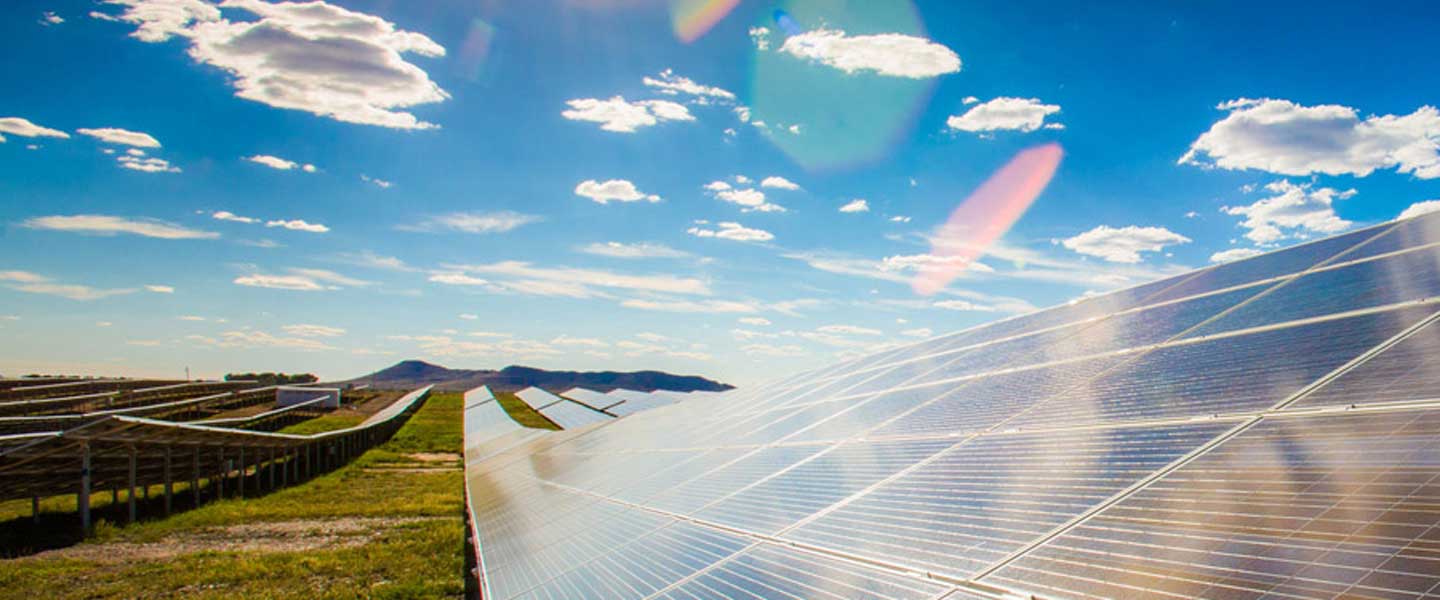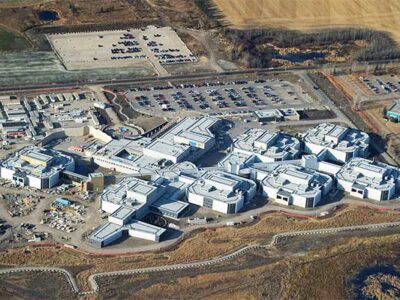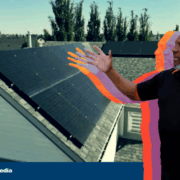There has been an increased deployment of solar energy technology across the United States—mainly because it is the cleanest domestic energy source, supports broader national priorities, including national security, economic growth, climate change mitigation, and job creation.
Some 16 gigawatts (GW) of solar energy will be installed this year (2016) alone, that is more than double the record-breaking 7.3 GW installed last year (2015).
This staggering 119 per cent growth in solar energy installations not only exists in the utility industry, but is led by installations in the residential sector.
Homeowners realize the benefits of installing a solar energy system. Not only because of the independence it provides by reducing reliance on the utility grid with cost reduction, shelters them from fluctuating and unreliable electricity prices, but it could also increase the property value of their homes.
What is the cost of a solar energy system?
You’ve probably asked this question before, and we’ve been asked the question many time over. “How much does solar panels cost?”.
Frankly, the answer to this question isn’t that straight forward, as it depends on a few factors—many of which are specific to your home and energy needs. But we will try to explain and provide as much information as possible to guide and narrow down a best possible answer prior to a detailed conversation and site assessment by one of our solar advisors.
Before we continue, its important to understand that having a solar energy system installed on your roof is not a-one-key-fits-all process. Costs vary across the entire market and your upfront cost will depend on three key factors: the state you live in, how much electricity your system will produce, and what finance options you qualify for.
To get started, we must first understand that the cost to install a solar energy system is also directly affected by your energy requirements—and the long-term savings recuperated is directly correlated to the electricity rates from your local electrical utility. These electricity rates vary, and each U.S state has different rebates and incentives that also affect the overall cost of each solar system installed.
Considering trends from past and future utility rates, combining the Federal tax credits, and local state incentives you may qualify for, could significantly reduce the cost of your solar system installation. Utility rates are the most important factor pushing many to go solar, as these not only change frequently, but are always on the rise.
U.S utility rates:
As utility rates go, the average residential consumer in the U.S. pays 13 cents per kWh. In states like California (19 cents), New York (18 cents), New Jersey (16 cents), and Massachusetts (18 cents), the cost of electricity is so high that solar energy is a no-brainer.
On a utility basis, wholesale spot prices for electricity are currently ranging from 2 cents to 3.5 cents per kWh. And much of the electricity being bid into those markets are generate from plants that are decades old and sometimes located at distant regions from the residential communities making maintenance and supply rates even higher.
The supply rate is the portion of the electric bill that covers the cost of generating electricity. It’s important to understand the role played in this equation by supply rates—as most utilities in the United States such as those in Massachusetts—do not physically generate their customers’ power, they make money only when they deliver this power; which accounts for the delivery portion of your bill.
So, how do you avoid getting hit year after year with the ever-increasing utility rate hikes? The answer is simple, by going solar. We have established that the cost of electricity in most U.S states are so high that the solution becomes glaringly clear—generate reliable clean and environment safe localized energy which incurs no distribution overhead costs.
The fact that installing a solar energy system is a major contribution to ensuring your children and their children’s children have a safe and clean environment in the future is also important. The fact that a solar energy system will last 30 years or more with no maintenance, and the components covered with very lengthy warranties—also means no worries.
Factors that affect solar system installation cost
There are two types of cost schemes when discussing solar energy system installation. There are soft costs and balance of system (BOS) Costs.
– Soft Costs:
Soft costs are the non-hardware costs associated with going solar. These costs include permitting, financing, and installing solar, as well as the expenses solar companies incur to acquire new customers, pay suppliers, and cover their bottom line.
– Balance of System Costs:
The balance of system encompasses all components of a photovoltaic system other than the photovoltaic panels. It makes up roughly 10%-50% of solar purchasing and installation costs, and helps control overhead costs, increase efficiency, and modernize solar energy systems.
To sum it up, considering the soft and balance of system costs—the total cost of your solar energy system will depend on the system size, the type of installation, the brand of equipment options such as panels and inverters, the permitting costs, and of course the labor costs. Other important factors such as the state of the roof and available sunlight exposure will determine how much solar panels that can be installed. This will affect the amount of electricity that your roof can produce which evidently will influence the total cost of the installation.
It’s also important to consider the labor costs associated with transportation. These costs vary by geographic location, and by the size of the array.
Solar system cost breakdown
– Cost per kilowatt
To paint a clear picture and calculate the cost of a solar install, we must know the national average of cost per watt to pay for solar in the U.S. Recent data indicates that U.S homeowners have been paying $3 to $4 per watt for solar energy system installations. This means that the average cost per watt will be approximately $3.57 per watt.
– Rebates and Incentives
Residential and commercial solar installers in the U.S. can benefit from a 30 per cent federal investment tax credit (ITC) until December 31st, 2016. Many states, counties, municipalities and even utilities offer rebates or other incentives that can be coupled with the ITC to reduce the upfront cost of your solar energy system installation. On average, homeowners can save up to $9,000 on the cost of their solar energy system installations by qualifying for the ITC.
There are a few good resources to visit and review the complete list of state-specific incentives and rebates available, as well as information and maps showing solar policies for each state. Remember that some of these incentives are tax credits and sales tax exemptions, while others are credits for various types of home improvement projects that reduce energy consumption.
Some utility companies allow homeowners with a grid tie solar installation to implement state level programs such as net metering. This means that they will install a special type of meter that spins both ways so that when you generate more electricity than you can consume—the rest is pushed back to the utility grid making this meter spin backwards—giving you credits to use for periods when you do not generate enough and need to pull electricity from the grid.
Payback period and available payment options
Several factors are driving today’s ever-increasing adoption of solar energy, from improved technologies and decreasing installation costs to generous federal tax credits. Installing a solar energy system on your property is always a good investment.
– Typical Payback Period
The typical return on investment timeline for a solar energy installation in the U.S today is approximately 7.5 years for a regular 6-kW system, assuming the typical sunshine conditions of 5 peak sun-hours per day. If we recall, the U.S national average cost per watt of solar installation is $3.57. So, a 6-kW solar energy system will cost an approximate $21,420 to be installed for this homeowner.
After the Federal ITC discount, the solar energy system should cost approximately $14,994—not factoring in any additional incentives and tax credits that are offered at the states level. This means that this dollar value may even drop further when that has been taken into consideration.
Note that the payback period and a return on investment will depend on your specific energy demand and the size of the system you decide to install.
– Payment options available
Since solar prices and sales taxes differ by state, the total cost for system installation will also vary. Let’s take the case for a few states for example: the cost to install a 6-kW solar energy system in Connecticut was quoted at the range $14,100 – $18,400, Massachusetts ranges were $14,500 – $18,600, New Jersey ranged $12,700 – $13,400 and New York came in at $13,500 – $19,200.
We offer three solar payment options that help cover part or all the cost of the solar energy system—meaning that you can very easily get your solar system installed for little or no upfront cost as demonstrated in the table above. Please contact us today to discuss these scenarios and to get specifics about your cost options.

















Comments